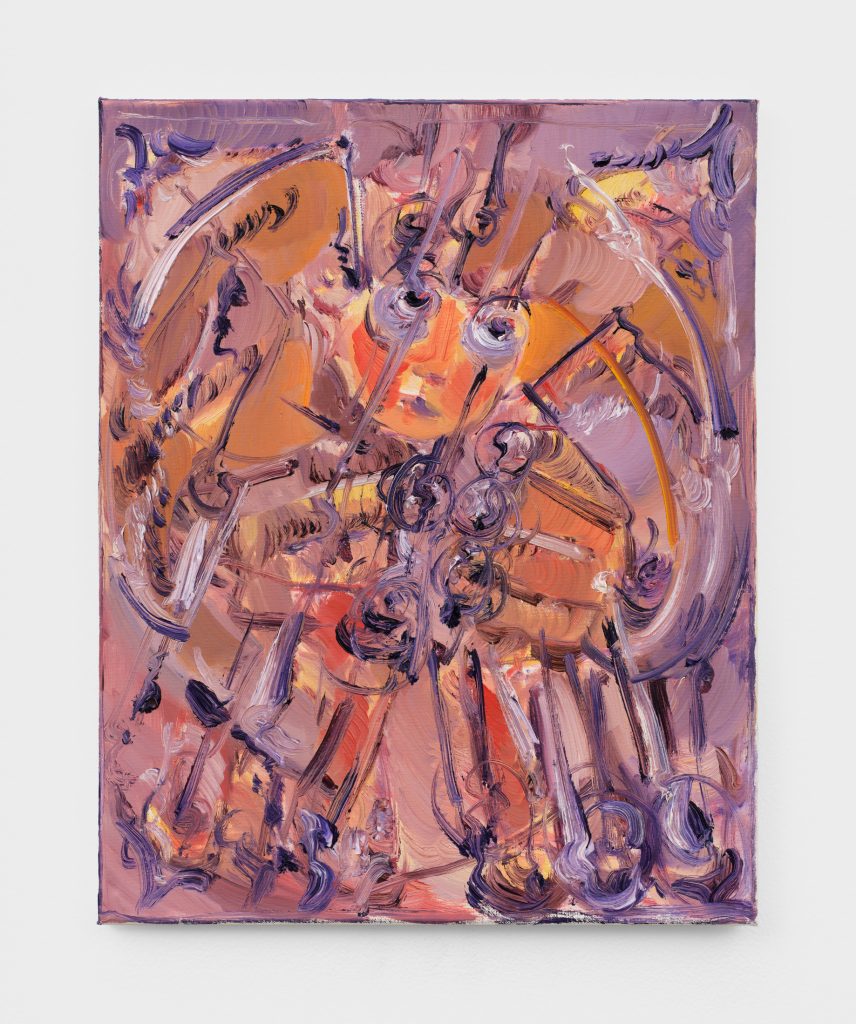
Press Release
Elmi Ventura Mata paints moments of divine encounter. His angels that emerge from thick swirls of rapidly layered color call to mind Paul Klee’s Angelus Novus. The Angelus Novus served as the basis for Walter Benjamin’s Theses on the Philosophy of History for Benjamin’s belief that Klee’s angel was the image of the “angel of history.” In Thesis IX, Benjamin writes, “‘Angelus Novus’ shows an angel looking as though he is about to move away from something he is fixedly contemplating. His eyes are staring, his mouth is open, his wings are spread. This is how one pictures the angel of history. His face is turned toward the past.”
Mata’s angels consider the past in a physical sense. For the artist, who crossed the border from El Salvador, to Mexico, then into the United States, time is crystallized within location. He was eight years old at the time of his first journey North, and he reflects on this experience in Handful of Flowers. Here, Mata paints in a bright, saturated palette inspired by his time spent in Mexico. He says that the title is hopeful. There are no flowers in the painting, but the figure has either given them as an offering or waits to receive them. This moment, kneeling between action and expectation, is a moment of faithful uncertainty.
Mata’s paintings are not depictions of past encounters with the transcendent, but evidence of his repetitive meetings with the holy through his ritualistic practice. In Winter Rain Mata depicts frigid cherubs whose melancholic visages are streaked with icy precipitation. This palette mixed by Mata directly on the canvas, is inspired by life in the Northeast United States. Mata speaks of long journeys home after night shifts working at an Amazon fulfillment center. He speaks of a particularly frigid night that he renders here in layers of paint like layers of clothing worn to protect himself against the violent environment. He speaks of his parents who did this before him. He speaks of disillusionment in the ‘land of opportunity,’ of creating sacred company in the midst of difficulty and gazing South. Benjamin continues: A storm is blowing in from Paradise; it has got caught in his wings with such a violence that the angel can no longer close them. The storm irresistibly propels him into the future to which his back is turned, while the pile of debris before him grows skyward. This storm is what we call progress.
This idea of progress, usually told by the victor, is hereby interpreted by the vanquished. It is not the utopian ideal of progress that creates desperation by which to draw and drive masses from their homes. It is the reality of the melancholy in the eyes of both Mata and Klee’s angels. The task of the angel of history is to establish a redemptive relation to the fragments we are left with. The angel is a code by which to, as Benjamin wrote, “understand a humanity that proves itself by destruction.” When Benjamin fled Germany in 1933, he wrote that the angel represented “all from which I had to part: persons and above all things.” Mata’s angels represent a ritualistic desire for an encounter with the why, with beauty and love, for one who has physically departed a place in time.
In Grounded, Mata paints a figure who holds a planetary sphere in its grasp. He says that he imagines that this being holds the power of planetary control. This figure holds a planet like a pulsing bead, a nucleus. Benjamin’s angel stands between two approaches to history. You can tell a sequence of events like the beads of a rosary, or you can see them as living and throbbing with revolutionary possibilities that urge you to establish a messianic relation with the past.
—Toniann Fernandez
Region
Location
-
1819 3rd Avenue, Los Angeles, California 90019, United States


Add a review